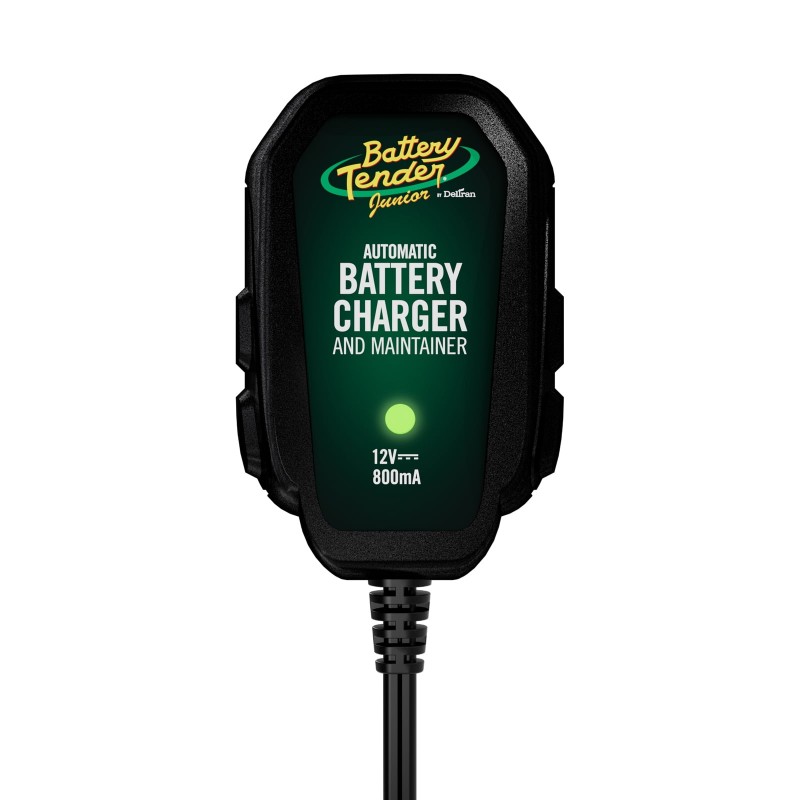In the world of automobiles and electronic devices, the battery charging system plays a vital role in ensuring functionality and reliability. The battery charging system is responsible for replenishing the energy stored in a battery and maintaining optimal voltage levels to power electrical systems. Whether in vehicles powering engines or in portable devices keeping your gadgets alive, understanding how the battery charging system works is essential. It encompasses various components, including alternators, batteries, and regulators, each playing a specific role in the process. This comprehensive article will explore the workings of battery charging systems, their types, benefits, potential issues, and maintenance tips, which will equip you with the knowledge necessary to keep your battery running efficiently.
The Basics of Battery Charging Systems
To understand what a battery charging system is, we must first explore its basic components and functions. The battery charging system ensures that the battery maintains sufficient power to operate various electrical systems.
Battery Function
At its core, a battery stores energy and provides it to the electrical components of a vehicle or device. In automotive applications, the battery serves several crucial functions:
- Starting the Engine: The battery supplies the necessary initial power to start the vehicle’s engine, providing a burst of electricity to the starter motor.
- Powering Electrical Systems: While the engine runs, the battery delivers energy to various electrical systems, including lights, radios, and onboard computers.
- Supplementing the Alternator: When the engine is off, the battery takes over the power supply for electrical components. Additionally, the battery serves as a buffer to the alternator, stabilizing the electrical system.
Components of a Battery Charging System
The battery charging system consists of several key components working together to ensure that the battery remains charged and functional:
- Alternator: The alternator is a crucial component of the battery charging system. It generates electricity while the engine is running, recharging the battery and powering various electrical systems.
- Voltage Regulator: The voltage regulator monitors and regulates the voltage output from the alternator to ensure it remains within safe limits. This prevents overcharging, which could damage the battery.
- Battery: The battery stores electrical energy generated by the alternator. It provides power to start the engine and supports electrical components when the engine isn’t running.
- Wiring Harness: The wiring harness connects all components of the battery charging system. It facilitates the transfer of electricity between the alternator, voltage regulator, and battery.
- Connectors and Terminals: These components ensure secure connections between the battery, alternator, and other electrical systems, facilitating efficient energy transfer.
Understanding these basic components provides a more comprehensive view of how the battery charging system operates and maintains essential functions.

Types of Battery Charging Systems
Battery charging systems can vary based on design and application. Understanding these types helps in selecting suitable charging systems for specific needs.
Conventional Charging System
The conventional charging system is commonly found in older vehicles. It consists of a simple alternator charging configuration that provides electricity to recharge the battery directly.
- Basic Operation: In this system, the battery receives current generated by the alternator while the engine is running. The voltage regulator ensures that the battery receives the optimal charging voltage.
- Pros and Cons: While conventional charging systems are simple and cost-effective, they may not provide the efficiency of modern alternatives. Additionally, they lack advanced features like smart charging algorithms.
Smart Charging System
Smart charging systems have gained traction in recent years, particularly in modern electric and hybrid vehicles. These systems employ advanced technology to enhance charging efficiency.
- Adaptive Charging: Smart charging systems can adjust the charging rate based on the battery’s state of charge and temperature. Adaptive charging reduces the risk of overcharging and extends battery lifespan.
- Communication: These systems often feature communication protocols that allow them to interface with onboard computers and provide real-time diagnostic data.
- Pros and Cons: While smart charging systems offer increased efficiency, they tend to be more complex and costly than conventional systems. Maintenance may require specialized knowledge and tools.
Dual Battery Systems
A dual battery system involves the use of two batteries within a vehicle, commonly seen in application scenarios such as recreational vehicles, trucks, and off-road vehicles.
- Design: In a dual battery system, one battery serves the primary electrical needs of the vehicle (starter battery), while the second battery supports additional accessories (auxiliary battery).
- Isolation Mechanism: This system typically employs an isolation switch that prevents the auxiliary battery from draining the starter battery. This ensures that the vehicle can start even if additional electronics consume energy.
- Pros and Cons: Dual battery systems are excellent for off-grid applications, but they can be complex to set up and manage. Maintenance may require periodic checks on both batteries’ conditions.
Solar Battery Charging Systems
Solar battery charging systems harness solar energy for charging batteries and have become increasingly popular in remote locations and eco-friendly applications.
- Design: These systems incorporate solar panels, charge controllers, and batteries to store solar energy. They provide a sustainable energy source, especially in areas without access to grid power.
- Advanced Features: Chargers can optimize energy input based on sunlight availability and battery demand, making them highly efficient in harnessing renewable energy.
- Pros and Cons: Solar battery charging systems offer sustainability benefits, but initial setup costs can be high. Additionally, charging efficiency may vary based on weather conditions.
Understanding the various types of battery charging systems provides insight into their applications, advantages, and challenges. Selecting the right charging system depends on individual needs and vehicle requirements.
How Battery Charging Systems Work
To grasp how battery charging systems function, we need to examine the sequential steps involved in the charging process. Understanding this process is essential for maintaining a reliable battery system.
Starting the Vehicle
When a driver turns the ignition key or pushes the start button, a series of events unfold:
- Powering the Starter Motor: The battery provides a jolt of electricity to the starter motor, initiating the engine’s operation. A well-charged battery ensures that the starter motor receives enough power to function effectively.
Alternator Operation
Once the engine starts, the alternator takes center stage:
- Generating Electricity: The alternator harnesses mechanical energy from the engine via a belt-driven system, converting it into electrical energy to recharge the battery.
- Voltage Regulation: The voltage regulator plays a crucial role during this process by regulating the voltage output from the alternator, ensuring optimal charging levels while preventing overcharging.
Battery Recharging
As electricity flows from the alternator to the battery:
- Charging Cycle: The battery absorbs the electric charge, replenishing its stored power. This cycle can vary in duration based on the battery’s state of charge and the electrical load imposed by the vehicle’s systems.
- Absorption Phase: During the charging process, batteries enter several stages (bulk, absorption, and float) to optimize charging efficiency, depending on their chemistry. This ensures that the battery receives suitable levels of charge.
Battery Discharge
When the engine is off, the vehicle relies on the battery to power electrical components:
- Powering Electronics: The battery supplies power to essential systems such as lights, radios, and infotainment systems. It allows for functions even when the engine is not running.
- Self-Discharge: Over time, batteries can lose charge due to internal chemical reactions. This underscores the necessity of a well-functioning battery charging system to maintain battery health.
Understanding these operations equips you with vital insights into the battery charging system’s functionality, enabling better battery maintenance and care.
Benefits of a Well-Functioning Battery Charging System
Investing time and care into understanding and maintaining battery charging systems yields numerous advantages that enhance vehicle performance and reliability.
Enhanced Reliability
- Consistent Power Supply: A functional battery charging system ensures a reliable power supply to all vehicle components. This reliability minimizes unexpected breakdowns and electrical failures.
- Longer Battery Lifespan: Proper charging and maintenance increase battery life, allowing you to enjoy maximum performance from your investment.
Optimized Performance
- Improved Efficiency: Systems designed with advanced charging technology optimize battery health, resulting in better vehicle performance and fuel efficiency.
- Adaptation to Demands: Sophisticated systems, such as smart charging, can adapt charging rates based on vehicle demands. This adaptability promotes better overall operation.
Cost-Effectiveness
- Reduced Maintenance Costs: A well-maintained battery charging system minimizes wear and tear on the battery and other components, resulting in fewer repairs and replacements over time.
- Increased Resale Value: Keeping your vehicle in a healthy state through proper care and maintenance contributes to a higher resale value when it’s time to trade in for a new model.
Troubleshooting Common Issues in Battery Charging Systems
Understanding how to troubleshoot common issues within battery charging systems is critical for vehicle maintenance. Recognizing symptoms early can save time, money, and inconvenience.
Signs of Charging System Problems
Several telltale signs may indicate that your battery charging system is experiencing difficulties:
- Dimming Lights: If the headlights and interior lights gradually dim while the vehicle runs, it could indicate issues with the alternator or battery.
- Warning Indicators: The battery warning light on the dashboard can signal charging system problems. If it lights up, it’s crucial to check the charging system.
- Frequent Battery Failures: Regularly needing jump-starts or battery replacements may indicate underlying issues within the charging system.
Common Causes of Charging Issues
Several factors contribute to problems within the battery charging system:
- Faulty Alternator: A malfunctioning alternator can lead to inadequate power generation, preventing the battery from charging efficiently.
- Worn Belts: Worn or loose serpentine belts can hinder the alternator’s operation. Regular inspections can help detect wear early.
- Connection Problems: Corroded terminal connections or loose wiring can disrupt the flow of electricity, leading to charging deficiencies.
Steps for Troubleshooting
When diagnosing issues with the battery charging system, follow these steps:
- Inspect Connections: Begin by checking terminal connections on both the battery and alternator for tightness and corrosion. Clean any corrosion with a mixture of baking soda and water.
- Test the Battery Voltage: Use a multimeter to check the battery voltage. A healthy battery should read around 12.6 volts when fully charged. If it reads significantly lower, it may indicate a charging issue.
- Check Alternator Output: With the engine running, measure the voltage at the battery again. Ideally, it should read between 13.8 to 14.4 volts. If it doesn’t, the alternator may not be functioning correctly.
- Seek Professional Help: If you cannot determine the issue, or if you suspect a serious problem, it’s best to consult a professional mechanic for a thorough evaluation.
Maintenance Tips for Battery Charging Systems
To prolong the life of your battery and maintain an optimal charging system, follow a series of maintenance tips to ensure everything functions smoothly.
Regular Inspections
- Visual Checks: Regularly examine the battery for signs of wear, corrosion, or damage. Inspect cables and connections for tightness.
- Inspect the Alternator: Watch for wear signs in the alternator belt, including fraying or cracking. Address issues before they escalate.
Cleaning and Corrosion Prevention
- Battery Terminal Cleaning: Periodically clean the battery terminals to remove corrosion. This can improve connectivity and reduce charging issues.
- Protective Coatings: Applying a protective spray or grease to battery terminals can help prevent moisture buildup and corrosion.
Charging System Tests
- Load Testing: Conduct load tests on the battery to gauge its performance. Doing this before long trips can alert you to potential issues before they become problematic.
- Professional Service: Schedule routine check-ups with a qualified mechanic. During service, have the charging system inspected to ensure everything remains in good working order.
Battery Replacement
- Know the Lifespan: Be aware of your battery’s expected lifespan. Most lead-acid batteries last around three to five years, while lithium-ion batteries can have a longer lifespan. Being proactive helps mitigate unforeseen failures.
- Choose Quality Products: When replacing your battery, opt for high-quality products that meet or exceed OEM specifications. A well-chosen battery can boost overall charging system efficiency.
By following these maintenance tips, you can help ensure that your battery and charging system remain reliable and efficient over time.

Conclusion
In summary, understanding what a battery charging system is and how it operates is crucial for maintaining the performance and longevity of vehicles and electronic devices. Battery charging systems play a vital role in replenishing battery power and ensuring all electrical systems function effectively. As we have explored, various configurations and components contribute to the functioning of these systems, each with its advantages and challenges.
The growing importance of maintenance and troubleshooting is evident, as proactive measures can lead to extended battery life, optimal performance, and cost savings. Adopting good practices, including routine inspections and maintenance, can enhance your battery charging system and your overall driving experience.
As technology continues to advance, the battery charging systems found in vehicles and devices will evolve, offering improved efficiency and functionality. Staying informed and proactive about maintaining your battery charging system will empower you as a driver, ensuring reliable performance for years to come.